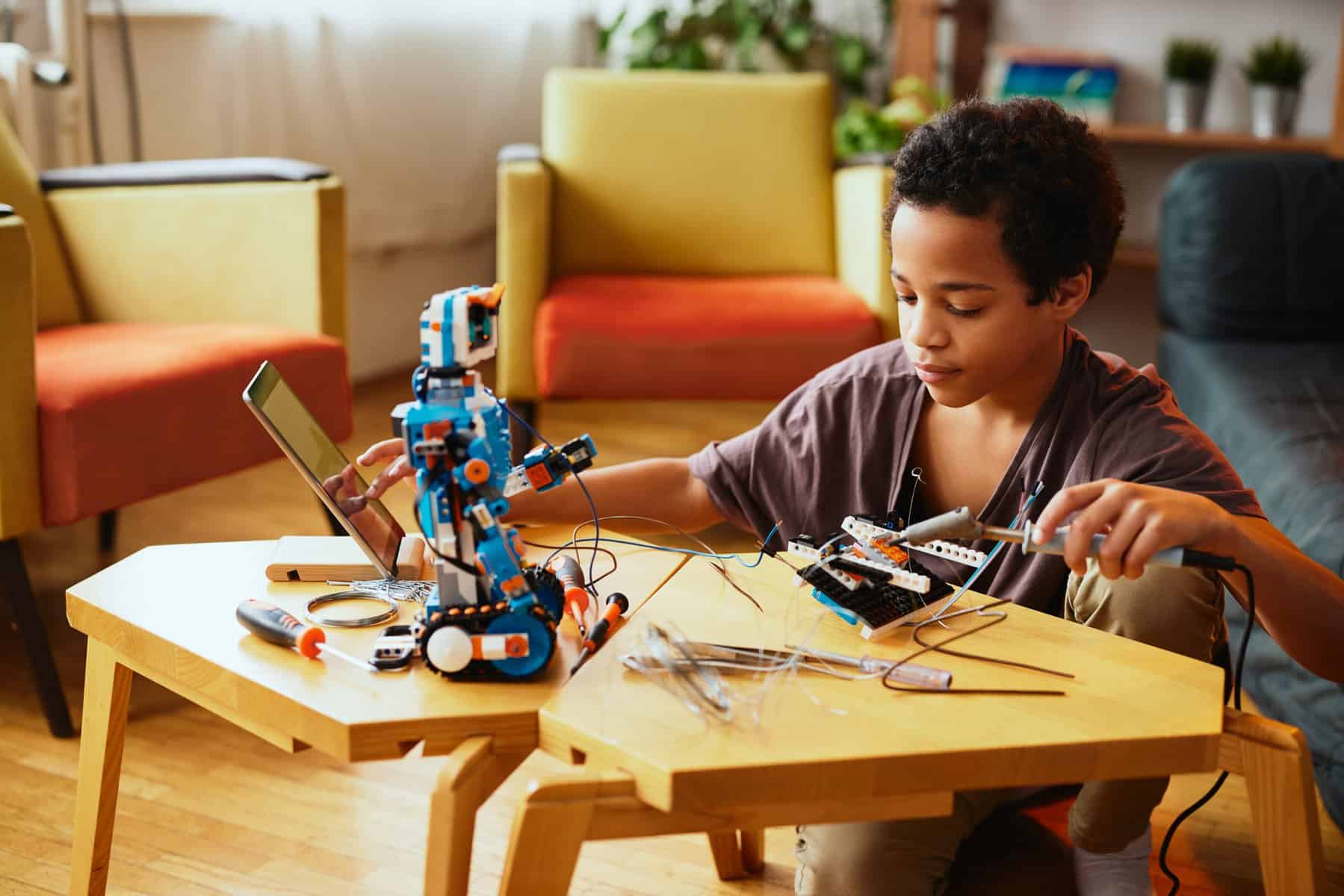Project-Based Homeschooling
Project-based homeschooling is a popular and interactive approach to at-home learning. This method is perfect for homeschooling, since student-led learning is at the very heart of project-based learning. With added bonuses of flexibility and instilling a love of learning in your children, project-based homeschooling is the perfect choice for many families — and many use Miacademy’s online curriculum to help them do it!
Curious to learn more about this homeschool style? Read on to discover how project-based homeschooling can engage your child and make your homeschooling journey unique.
What is Project-Based Homeschooling?
Project-based homeschooling’s origins were inspired by Reggio Emilia, whose approach toward learning asserted that children are the most important protagonists and leaders of their own learning. Reggio Emilia’s philosophy toward learning and how children learn acts as the foundation for project-based homeschooling. Children take complete ownership of their learning, with the guidance of their parents as mentors. Rather than using a set or defined curriculum, project-based homeschooling is entirely directed by the child. The hallmark of this approach is that the child learns through the process of answering a question or solving a problem that the child comes up with themselves.
Benefits of Project-Based Homeschooling
When you decide to start project-based homeschooling, you may face a lot of uncertainty — and questions — from friends and family. Your child will decide what they learn? What if they don’t want to learn math? How can they teach themselves things they don’t yet know? How will your child learn what they need to succeed? Many adults are used to thinking in terms of the structure of traditional schools, but the truth is that project-based homeschooling removes the constraints of curriculum and standardized learning. With newfound freedom to pursue the things that fascinate them, your child will thrive and succeed with project-based homeschooling. Project-based learning has many benefits for children, like…
- Finding the real-world connection to what they are learning
- Keeping them motivated because they are guiding their learning
- Being able to learn and do what they’re interested in, instead of “waiting for 4th grade” or “waiting until that comes up in the curriculum”
- Learning how to develop research skills from a young age
- Never thinking “Why do I have to learn this?”
In fact, Edutopia recently commented on research into project-based homeschooling and discovered that “project-based learning significantly outperformed traditional curricula, raising academic performance across grade levels, socioeconomic subgroups, and reading abilities.”

How To Do It
The first step, and perhaps the most difficult for some parents, will be to resist the temptation to step in or give answers. In project-based homeschooling, the parent’s role is that of mentor, not teacher. You are now the “guide on the side” rather than the “sage on the stage.” Let your kid take charge! You are there to support them by taking them to the library or other places of research, making sure they have a wide variety of supplies and tools and encouraging them without giving them all of the answers.
With your child taking the lead, they will come up with a question or a problem. Often referred to as a “driving question,” this idea should be open-ended. Many driving questions also include the pronouns “I” or “we” to make them directly relevant to the child’s life. Once a driving question has been selected, you can determine what resources your child will need to solve their problem. The beauty of project-based homeschooling is that to answer their question or solve their problem, students will need to find a wide range of information from a wide variety of disciplines! The interdisciplinary nature of project-based homeschooling is engrossing, and the child’s final project should incorporate multiple elements.
Perhaps your child wants to know “How can I make a profit from a zip-line adventure park?” To answer this driving question, your child will need to ask many other questions and investigate many topics, learning valuable knowledge along the way. They might need to investigate in these areas:
Math Curriculum
- How fast does a person go on a zip-line?
- How long should a zip-line be?
- How much will I charge people per ride?
- How many people can I accommodate in one day?
- How much land do I need in order to create enough space for my zip-lines?
Science Curriculum
- What materials are needed to create a zip-line?
- How can I determine whether or not materials are strong enough?
- What role does gravity play in a zip-line?
Language Arts Curriculum
- How can I persuade customers to come to the park?
- What kind of wording should I use in my advertisements?
- Will customers need to sign a waiver? How should I word that waiver? How will I ensure that customers have understood it?
Social Studies Curriculum
- Will I need to remove trees or plants to create my park?
- Are there endangered species in the area in which my park will be created?
- How can I protect the environment while creating my park?
A student’s final project for this driving question may include…
- Plans for the park layout
- Graphs showing projected profits
- Brochures for advertising
Have multiple children at different age levels? Project-based homeschooling can be a family affair! While an older child might calculate the rate of acceleration on a zip-line due to gravity, a younger child might focus on creating a model of a zip-line, using string and cardboard. Alternatively, while an older child might write a persuasive advertisement for the park, a younger child might prepare the accompanying illustrations. The possibilities are endless!

Project-Based Homeschooling and Miacademy
How can Miacademy help make your project-based homeschooling dreams come true? Just follow these steps:
1. Your child needs to come up with a driving question or problem.
- Our wide variety of engaging videos is sure to inspire questions. Use our parent portal to assign all of our available lessons, at all levels, to your child. Based on their interests, children can choose any lesson in any subject: Language Arts, Math, Science, Social Studies, Music & Arts, Foreign Languages, or Life Skills! Something is sure to create a spark that will ignite that driving question!
2. Your child will research their project.
- With access to all lessons, at all levels, in our parent portal, you may want to identify which lessons and resources could be most helpful to your child.
- Our lessons include PDFs with related recommended reading, extension activities, and interdisciplinary experiences. One of these may also become part of your plan for the project! The flexibility you have to pick and choose lessons means that our video bank can act as a research source for kids. They will be able to access any lesson, in any subject, at any time!
3. Your child will present their project.
- Our safe, moderated online community provides your child with the built-in ability to present their findings and projects to a community of their peers! They can write an article for our site newspaper or even post a video that explains their project and findings.
- The ability to present their work to a community of their peers means that they will also receive feedback and praise, which will motivate them to continue with their next project!
Throughout the course of their project, you will have access in the parent portal to our Reports tab. Within this tab, you will have an automatic record of the core courses and electives your child has taken, as well as any scores on assessments. This information, broken down by subject, makes it easy to demonstrate that your child is meeting state and local requirements for their homeschool education.
We can’t wait to see what your child is able to accomplish when they are in the driver’s seat! Don’t forget that our customer service team is always available to answer any questions you may have.
